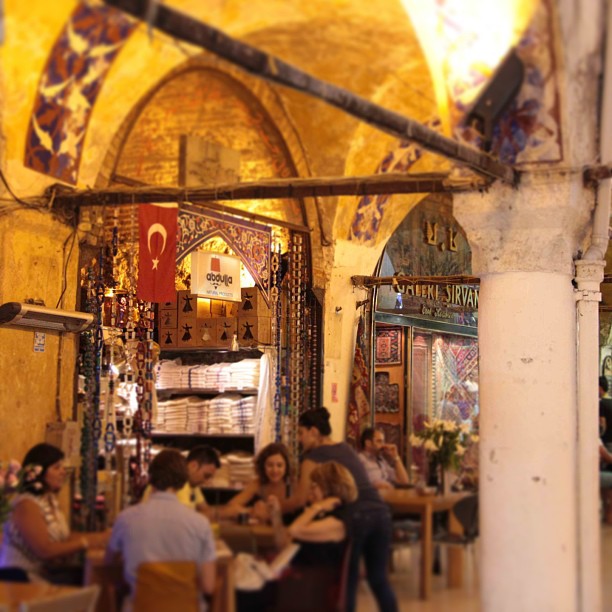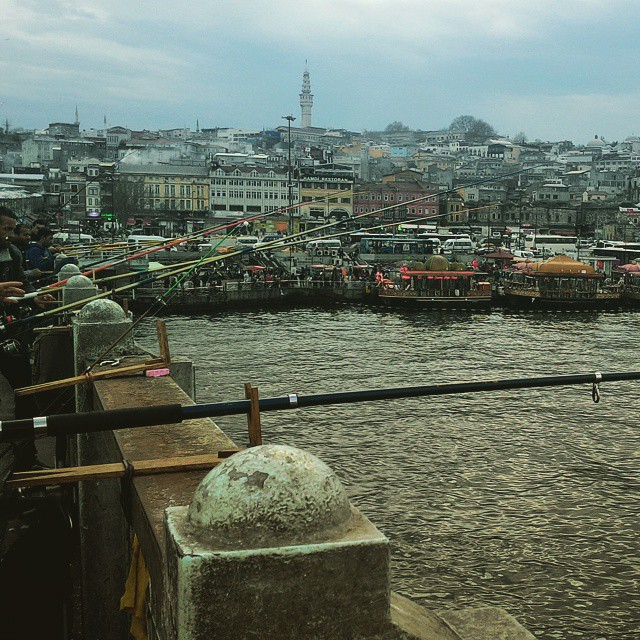
There are a great many things to see in Turkey, but for the traveller looking for a truly unique experience, the Grand Bazaar in Istanbul is a feast for the senses. Offering about 5,000 shops, this is one of the oldest and largest covered markets in the world. Constructed in the 1450s following the Ottoman conquest of Constantinople, the Grand Bazaar is alive with colours, smells, and sounds. The market is open from 9am to 7pm, Monday through Saturday, with closures on Sundays and bank holidays.
We’ve got some tips having an optimal shopping experience in the Grand Bazaar, so grab some Turkish lira and hit the market, where the wandering visitor can find everything from fortune-telling rabbits to vibrant textiles, rich spices, and much more.
Upon first entering the Grand Bazaar, expect to immediately see a dozen things you want to buy. It is a rookie mistake to commit to the first eye-catching object, so try to refrain from buying the first thing you see. Instead, spend some time walking around and observing many shops (with a smartphone, it’s easy to pin the location to return later) to get an idea of price range and item selection. With some 5,000 shops stretching 60 streets, there is a lot to see — and a lot of history to take in, so you’ll want to take your time browsing. The high domed Cevâhir Bedesten at the market’s centre was originally constructed by Sultan Mehmet II as a dedicated area for the trade of textiles. The building still stands, and continues to house some of the market’s most precious objects and antiques.
Many shopkeepers will offer çay, or tea, to browsing patrons. To refuse is rude, though acceptance at some 16 shops might very well be a bit much. To avoid coming out of an afternoon feeling like a water balloon, politely accept and take a few sips. And don’t worry, accepting does not commit the shopper to making a purchase.

Many travellers are inexperienced with haggling or bargaining, but it is typical in a great many countries around the world. It is common to feel uncomfortable or embarrassed when starting out, but trust us, it can be quite fun and exhilarating once you’ve had some practice — plus, you get to walk out of a transaction with a great price!
Vendors will often intentionally inflate prices because they 1) expect patrons to bargain, and 2) generally charge more to tourists. To get a feel for fair prices and how to bargain, it can help to (inconspicuously, of course!) observe locals haggling. If the price is wrong, one might try thanking the vendor and moving to leave the shop, at which point, the vendor may counter by asking what price you want. Alternatively, the vendor may walk away, but if you refuse to cave, and the last price was not too far off from reasonable, they may return to resume haggling. It can also be helpful to find two vendors with the same item and play them off one another. While you should be confident and firm while bargaining, keep your tone light and friendly. The business owners often have families to support, so don’t be rude.
When a particular item catches your eye, avoid showing too much interest or enthusiasm, especially if that item is rare. If you don’t the shop owner will know they have the upper hand since you can’t find another vendor with a potentially better price — and will therefore stay firm in their price.
If haggling still feels uncomfortable, there are shops with fixed sticker prices, but expect to pay much more at such establishments.

No trip to the Grand Bazaar would be complete without shopping for a Turkish carpet. However, this can be quite an expensive process, and it is very difficult to know the value of the prospects. If you want to be safe, try a trusted shop, as many carpets are now manufactured in China and it can be difficult to tell — there is a good list of trusted shops here (though it is certainly worth while to visit small shops in the Bazaar). There is a range of factors to consider: the material, like silk or wool; the designs, which are specific to the different cultures that hand-make the rugs (the more intricate the pattern, the more expensive); the dyes, which can be natural or chemical (natural dyes are less subject to fading, and do so more gracefully than chemical dyes); the number of knots per square metre (the more knots, the better made, and the more expensive); and the sizes (from prayer rug-sized to large).
Visit several carpet shops, where the vendors will treat you to a show of their wares (this can take hours). Do not buy on the first day, but rather, return to your favourite shop after having visited several, getting a sense for colours, patterns, and prices. Always buy handmade rugs. Again, definitely haggle for the price, but do so respectfully and with some humor.
Consider how to get a purchase home — a canvas duffel bag lined with plastic can help protect the textiles, though some shops offer shipping services.
While foreign visitors are not expected to dress according to local customs, you’ll have to remember that if you plan to visit any mosques during your stay, you must dress appropriately for admittance. Both the Aya Sofya and Blue Mosque are very close to the Grand Bazaar, and require that men wear long pants, and women are covered to mid shins. Women must also don a wrap or pashmina covering their heads. Wraps are supplied at the entrance of the Blue Mosque, free of charge or more stylish choices can be purchased easily in the Grand Bazaar.

A day of haggling can work up an appetite! There are incredible options available to travellers, but we recommend heading over to the Galata Bridge for an Istanbul fish sandwich. Fishermen catch, grill, and serve their catches right on their boats, so you can enjoy a delicious, fresh dinner while watching the sunset over the Golden Horn. Perfection.
This article originally appeared on Tailwind by Hipmunk.
Is Istanbul in your travel plans? Get there with some help from Hipmunk, then spend the day with a local on an Urban Adventures Istanbul city tour!